Like Alberta’s Banff, Jasper and Waterton National Parks, Saskatchewan’s Prince Albert National Park has an historic town centre with a unique park-style architecture. Exploring these buildings by pedal power is the perfect – and active – way to begin exploring this park’s past.
Disclosure: This post contains Affiliate links.
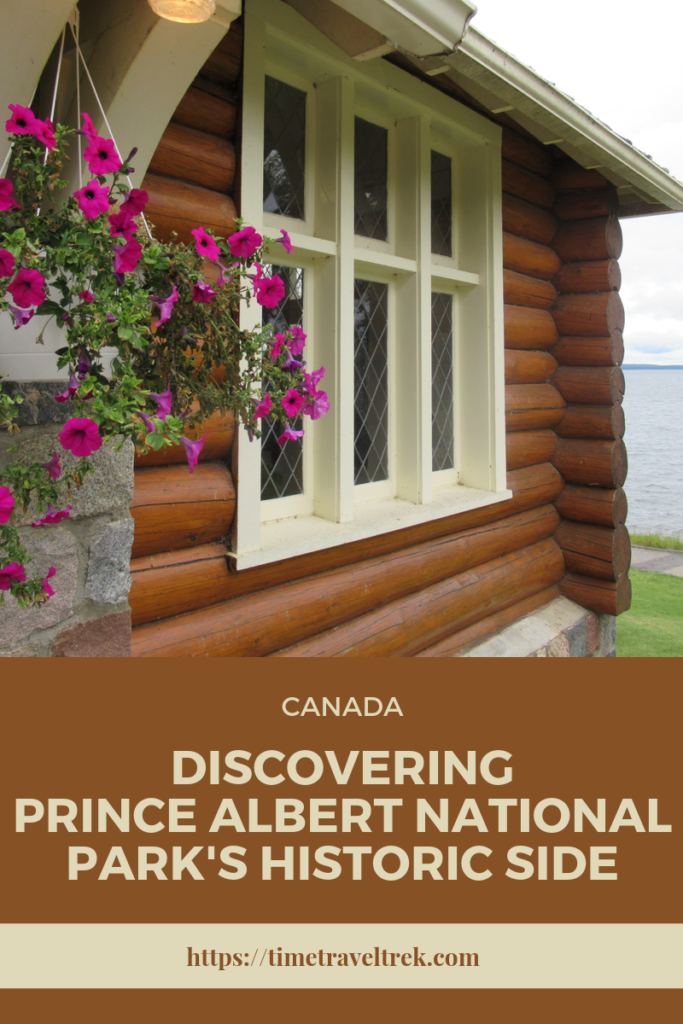
Table of Contents
King Decrees a Prince of a Park
Prince Albert National Park (PANP) is located in northern Saskatchewan, approximately 90 kilometres north of the city of Prince Albert.
The region has thick birch, poplar, spruce and pine forests. Dozens and dozens of lakes large and small dot the landscape – many with sandy beaches.
Because of this unique environment, it’s no wonder that the area was selected to become Saskatchewan’s first national park.
Prime Minister William Lyon Mackenzie King said this park was “like walking into a golden land of promise.”
King was a key player in the park’s creation.
The park opened in 1928 and Prime Minister King was there for the grand opening. Because of his efforts in establishing the park, King was rewarded with a rustic-style log cabin. It was given to him upon his arrival for the opening ceremonies.
King later left the property to the family who helped maintain it for him, but the Prospect Drive cabin still exists today.
Looking for more Saskatchewan adventures? Check out these posts:
Saskatchewan Adventures: Moose Jaw Murals and More
Canoeing the South Saskatchewan River
Travel Adventures: Exploring Fort Walsh National Historic Site
Wheelin’ Through Waskesiu
Waskesiu is a Cree word meaning “red deer.” It was established as Prince Albert National Park’s main townsite and service centre.
However, King’s cabin isn’t the only piece of architectural history left in Waskesiu.
While the Great Depression brought much of North America to its knees, PANP was bustling with activity. Between 1930 and 1936, hundreds of unemployed men spent time in Prince Albert National Park in work camps. They left a legacy of distinctive buildings in the townsite.
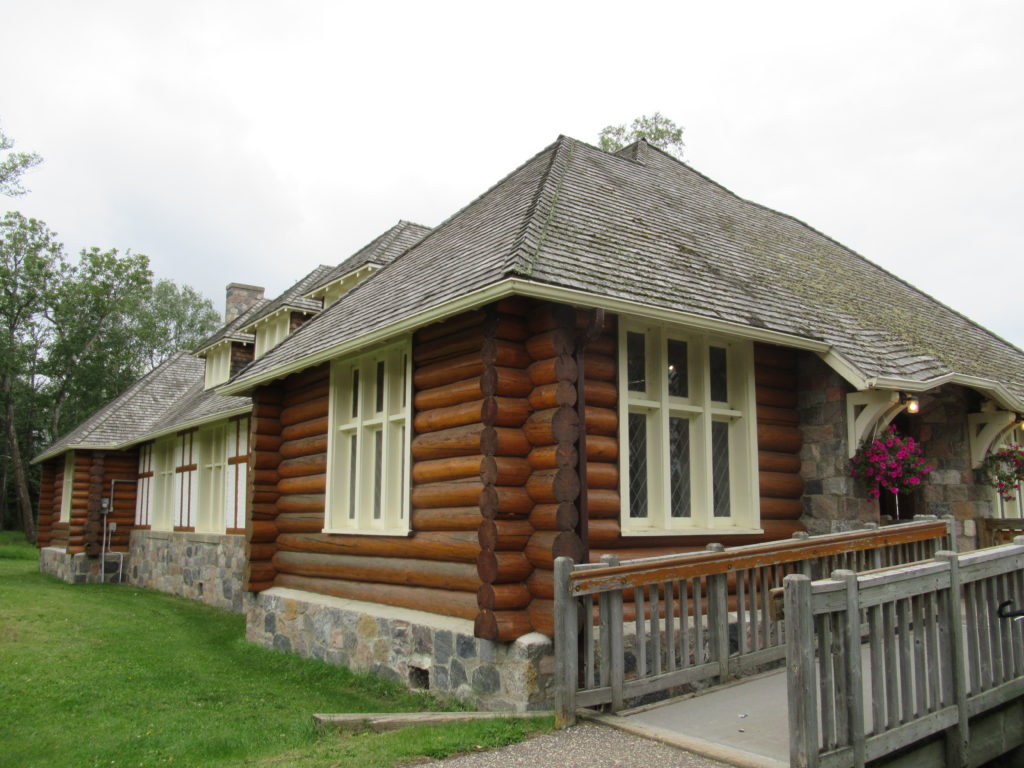
We decided it was time for a self-guided tour of more than a half dozen heritage sites of interest – and you can follow our route.
Bike or hike – it’s your choice!
We chose wheels. Heading out from our campsite in Beaver Glen Campground, we roll into the heart of the hamlet.
First stop? Today’s visitor centre for a map of the townsite. It includes a list of the heritage sites in Waskesiu, as well as area hiking and biking trails.
Map in hand, we sit on the steps outside and plan a route.
Our first stop on the tour is just across the parking lot.
Home to Office to Museum
The Friends of the Park Bookstore and Waskesiu Heritage Museum is a picturesque structure symbolic of early buildings in Prince Albert National Park. Local fieldstone, half timbers and multi-paned windows come together for the Tudor rustic style that early park architects deemed fitting.
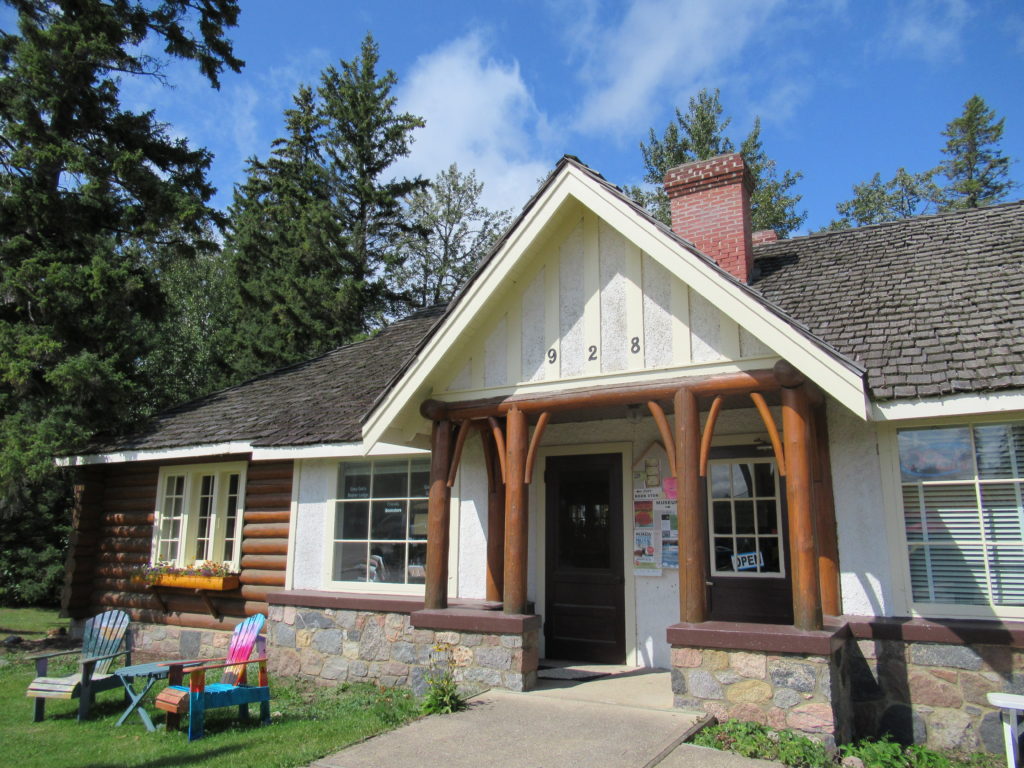
Relief camp workers built this building. It was originally designed as a duplex for Park staff accommodation – note the double entry and matching windows. Park wardens and their families lived side-by-side. Eventually it became the warden office on one side and the Information Centre on the other.
Today, the Friends of PANP operate a bookstore in one half and the Waskesiu Heritage Museum showcases part of its collection in the other half.
ASIDE: One room of the bookstore features a replica of the interior of Beaver Lodge – Grey Owl’s cabin on Ajawaan Lake. Grey Owl was Canada’s first park naturalist. He came to Prince Albert National Park in 1931 where he wrote three best-selling, conservation-themed books: Pilgrims of the Wild (1934), Sajo and Her Beaver People (1935), and Tales of an Empty Cabin (1936). Grey Owl and his beaver Jellyroll became famous. Tourists began flocking to Beaver Lodge each summer. Grey Owl – aka Englishman Archibald Belaney – died of pneumonia in 1938. Today, the 20 km (one-way) hike into Beaver Lodge remains a popular pilgrimage.
Shack Tent?
Outside of the museum, our attention was quickly snagged by the “shack”. It explained so much about the rows of small cottages we saw neatly aligned across from the grassy fields by the beach.
The “shack” is an original canvas-roofed shack tent. This tent style was popular in the early years of Prince Albert National Park and we spent time exploring the displays inside.
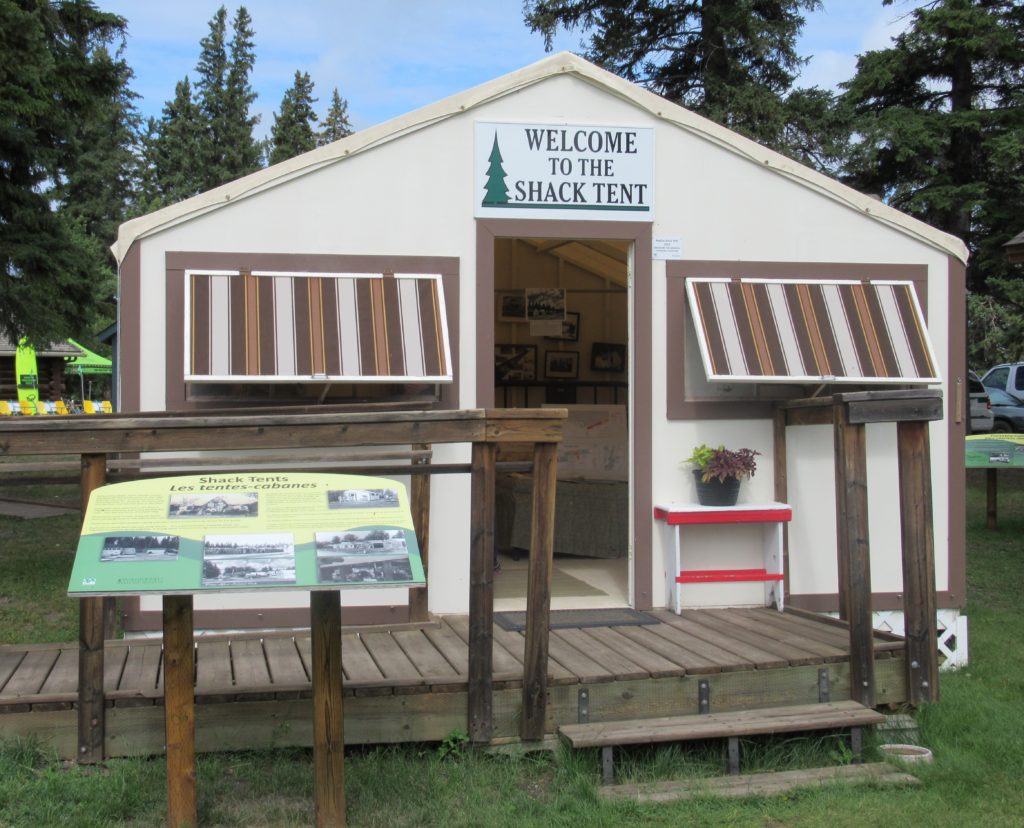
In the late 1920s, people camped in tents on the beach. By the early 1930s, Parks Canada moved tenters off the beach and into the trees.
Tree roots were uncomfortable to sleep on, so someone came up with the brilliant idea of building a wood floor to pitch their tent on. Before walls were added. Tarps were draped on the ridgepole overhead.
Voila! A shack tent.
Shack tents caught on. In no time they were lined up in rows just off the beach, neatly divided into blocks. Each block had a communal camp kitchen, running water, electricity and a washroom.
Sweet Deal! In 1939, it cost $2 to camp in a shack tent for each two-week period.
Shacks were put up in the spring and taken down in the fall. Temporary shack tents led to permanent portable cabins which became modern cabins complete with sewer and water by the late 1990s.
Who’d have guessed that was the evolution of what we see today?
A Warden’s Garage
Directly behind the museum’s shack tent is a large grey building, currently overflowing with bikes of every shape and size.
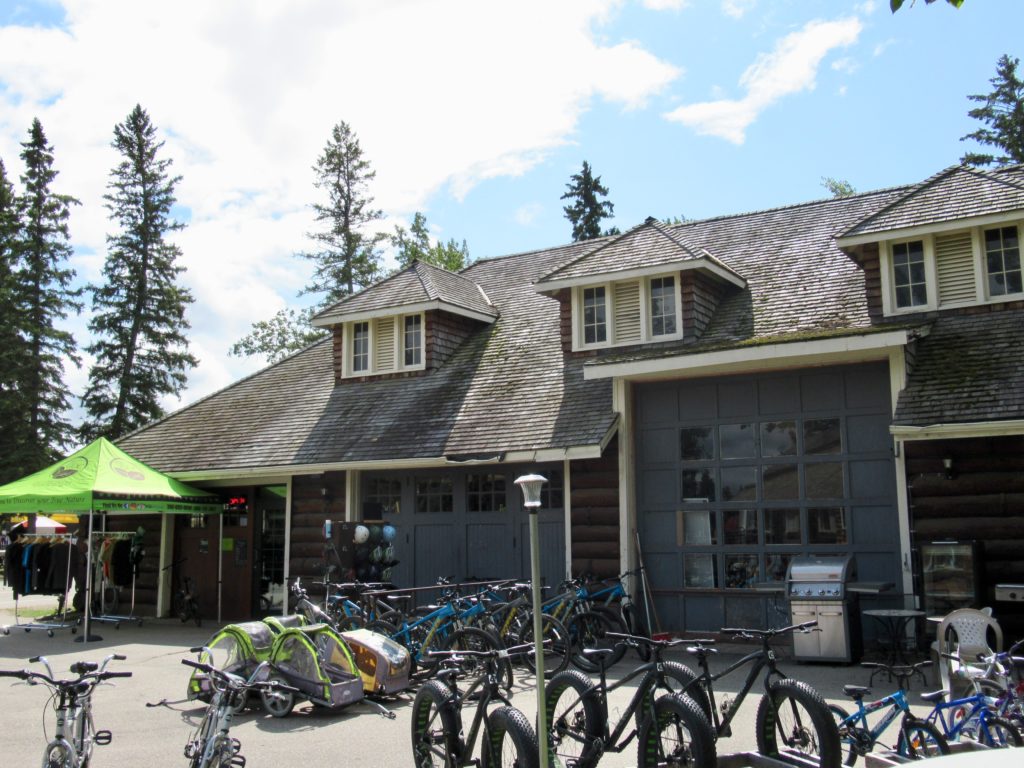
Today’s Grey Owl Centre rental facility is housed in the original log building that was once the garage for parks staff.
Built in the 1930s, the building’s log construction and dormers with multi-paned windows are indicative of the rustic architectural style of the park’s buildings. It was altered in the 1950s to become a warden garage.
Over the years, Grey Owl Centre has held everything from firefighting equipment to patrol gear, boats to maintenance equipment, and on today’s rental bikes. Seems like this building was tailor-made for active lifestyles, regardless of the decade.
Summer Playground
Typical of the era, PANP’s original purpose was to serve as a recreational playground. Lawn bowling and tennis were staples beyond beach and water sports.
Across the street from the museum, near today’s tennis courts, the Chamber of Commerce Recreation Centre was built in the early 1930s.
It was a popular place for a hot shower during the Depression era, but we have no time to stop and enjoy its services today. We have a bike ride ahead of us and are ready to roll.
Directly across the road, a path leads to the colour-coded trail system. We followed the red trail through the woods and around to Prospect Point for our next stop.
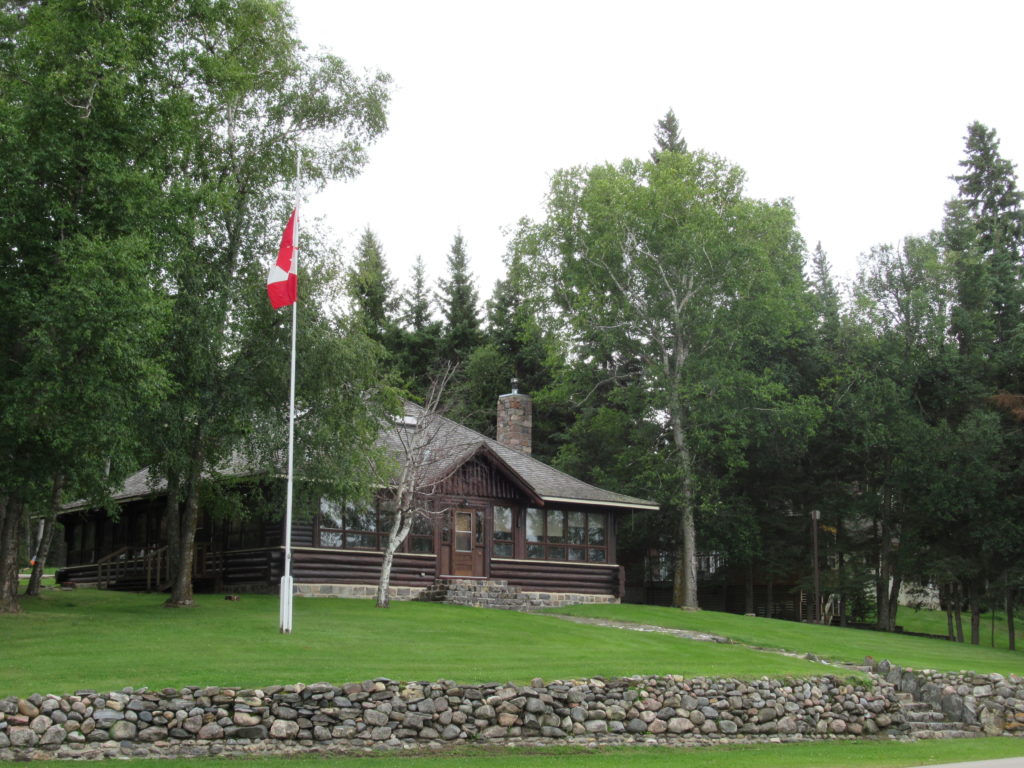
A Super Residence
Built in 1929, this log home was built for J.A. Wood – the first superintendent of Prince Albert National Park.
It was the first permanent staff facility built in this small cottage subdivision next to the golf course.
Local logs and fieldstone lend themselves to the rustic cottage look that was a distinctive style for the National Parks Branch across the country from the mid 1920s to the mid 1930s.
Superintendent Wood and his family lived here for almost 10 years, before his transfer to Jasper National Park.
Wood’s legacy is undeniable. During his reign, he surveyed land for Waskesiu’s development, directed relief camp workers to build infrastructure (much of which remains today) and hired the first wardens to protect and manage PANP’s natural environment.
Going for Golf
Prince Albert National Park was designed first and foremost as a resort destination. Development of the golf course was a high priority.
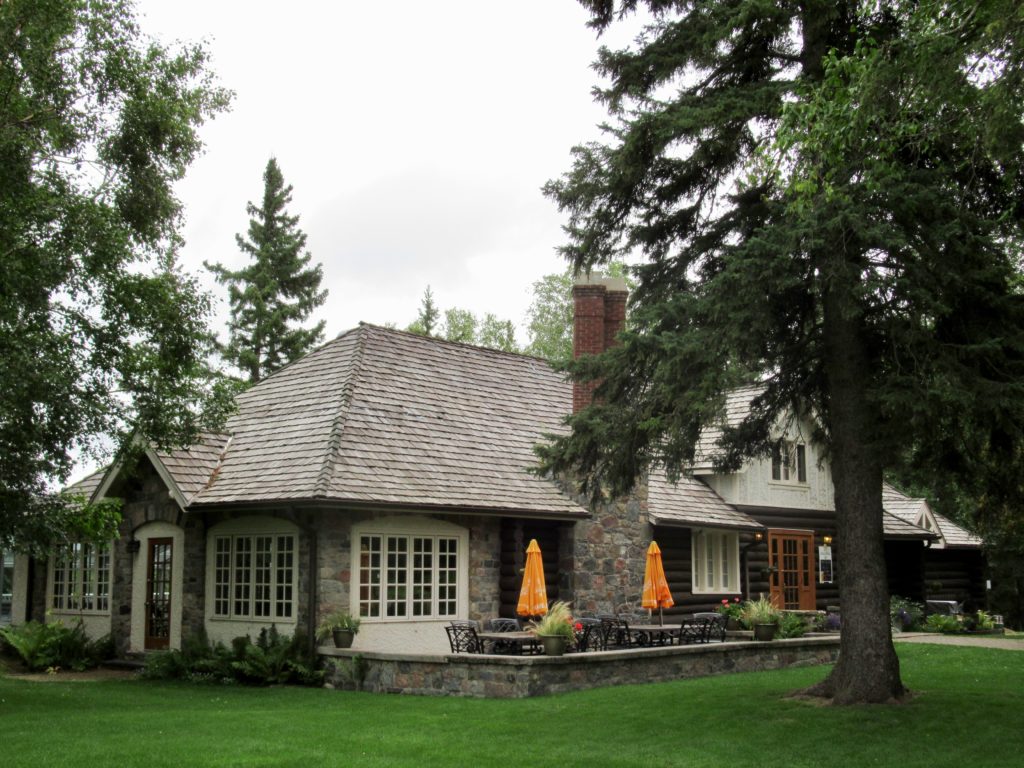
The Clubhouse is, of course, classic Tudor Rustic.
The stone-faced foundation and chimney, wood-shingled roof and multi-paned windows speak to the design plans of architect Stanley Thompson.
The work was carried out in 1934 by relief workers using spruce logs and local fieldstone.
It’s worth stepping inside for a view of the wood-paneled ceiling with framed with half logs, the full log walls and the massive fieldstone fireplace.
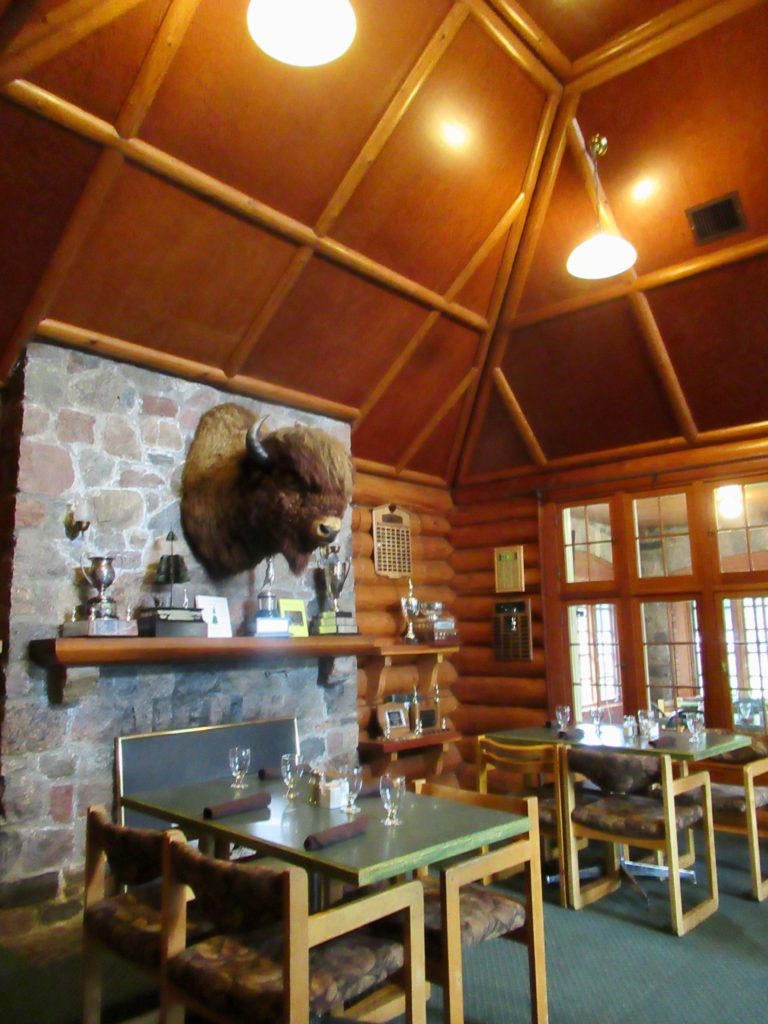
The Natural Side
Hopping back on our bikes, we followed the wide path down the hill and back to the lakeside path leading to the Nature Centre.
The Nature Centre was originally built as the Park Museum. It’s historic features of interest include the leaded-glass windows, half-log ceiling and decorative trim.
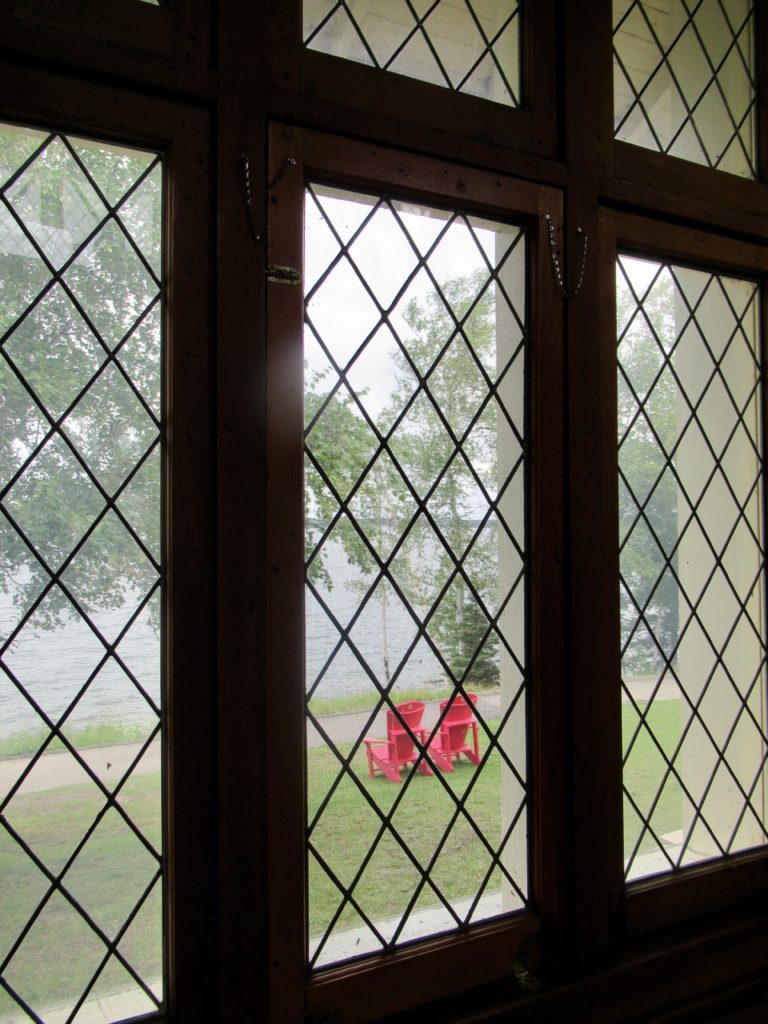
The glass windows beautifully frame watery vistas, while log construction on a fieldstone foundation complete the rustic design.
Inside – after admiring the architecture – be sure to take a moment to check out the displays. Toss a fish into the bird’s mouth or test your knowledge about local plant life – it’s fun for all ages!
Dance the Night Away
Directly across the street from the Nature Centre is the easily over-looked Assembly Hall, also known as Terrace Gardens.
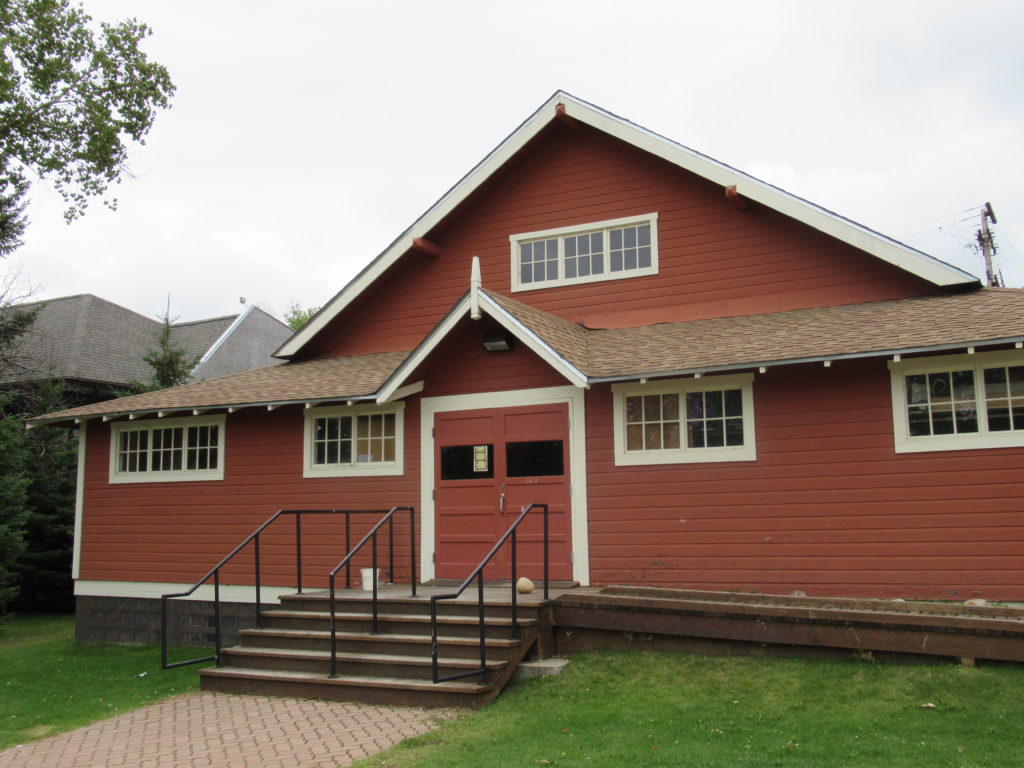
While it doesn’t have the obvious Tudor Rustic charm of the previous buildings, its story makes it worth a second look.
Terrace Gardens was a dance hall, built in the 1930s by Ian Barrie and Bill Schaan. Dancers whiled the nights away in the 1930s and 40s shimmying to the sounds of the Knights of Rhythm, Jeff and his Boys, the Terriers and the Singing Rascals.
The building remains one of the oldest commercial buildings in the townsite.
More Good Times
Hopping back on our bikes for one last time, we followed the path along the lake past the playground and picnic area along to the Community Hall.
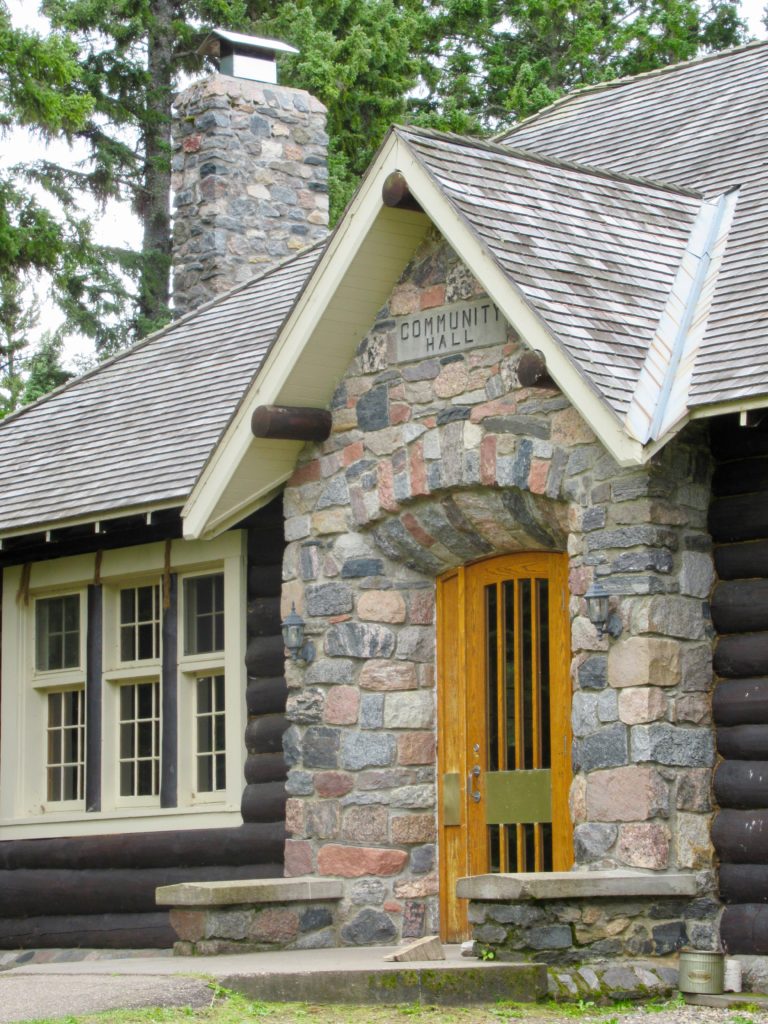
Oozing with Tudor Rustic charm, the low, T-shaped log building goes beyond the obvious fieldstones and multi-paned windows to add stained glass windows high in its peaks.

Originally built as a shelter for campers in the 1930s, the Community Hall quickly became a social hub for Waskesiu. The walls echo with song and laughter and voices from past weddings, church services, children’s events and box socials.
Speaking of boxed lunches, I am starting to feel a little peckish. Time to leave Waskesiu’s past and enjoy a picnic in today’s park – a place where shack tents once ruled!
Complete Self-Guided Tour in a Nutshell
Cycle from campsite in to Visitor Information Centre, pick up map – which we’ve marked up as follows:
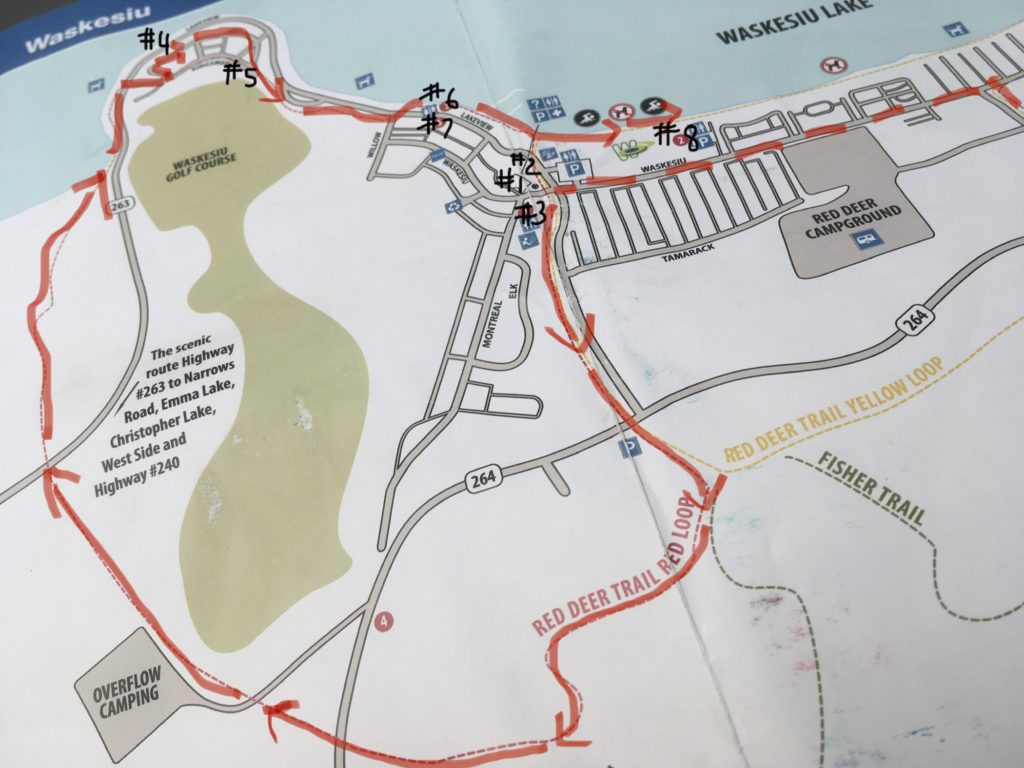
- Friends of the Park Bookstore/Waskesiu Heritage Museum
- Warden’s Garage
- (Bike/hike across street) Chamber of Commerce Recreation Centre
- (Follow red loop trail ~ 5 km) Superintendent’s Residence
- (Take road to golf course) Waskesiu Golf Course Clubhouse
- (Go along path to town) Nature Centre
- Terrace Gardens
- (Keep to the path along lake past playground and beach) Community Hall
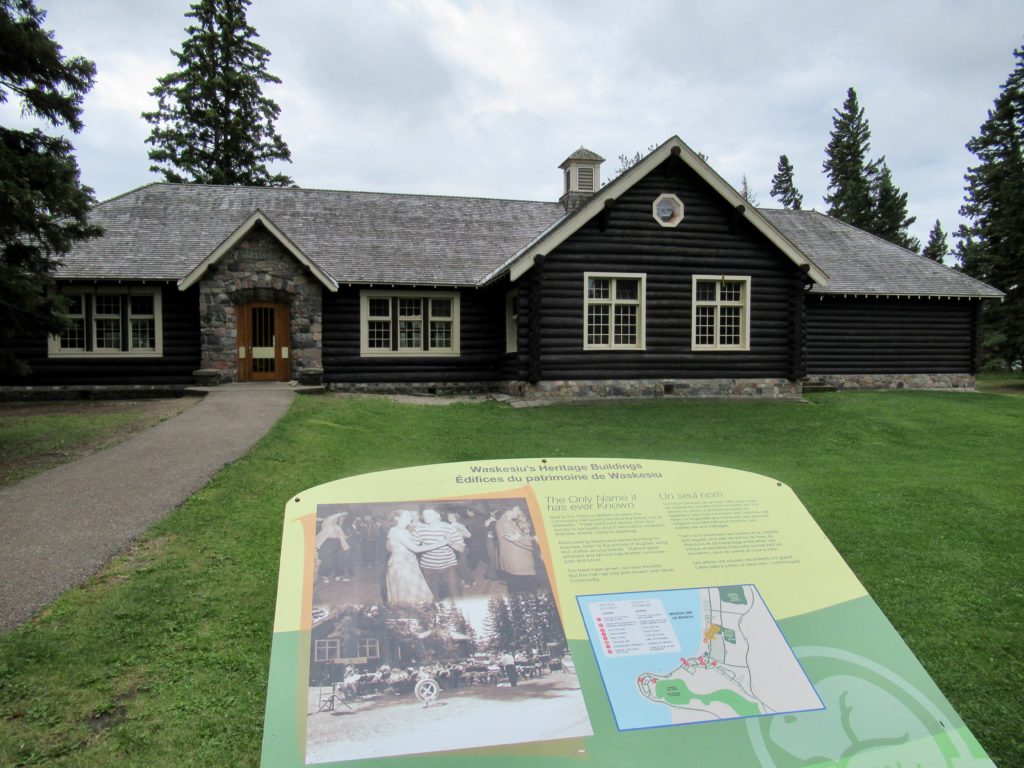



Interesting place! I had never heard of it so appreciate all the information!
Glad we could introduce you to this special place. We’ve known about Grey Owl, but this was our first visit to Prince Albert National Park. Next time, if the wind allows, we’ll do some more paddling and get up to his cabin. Lots of active options here!